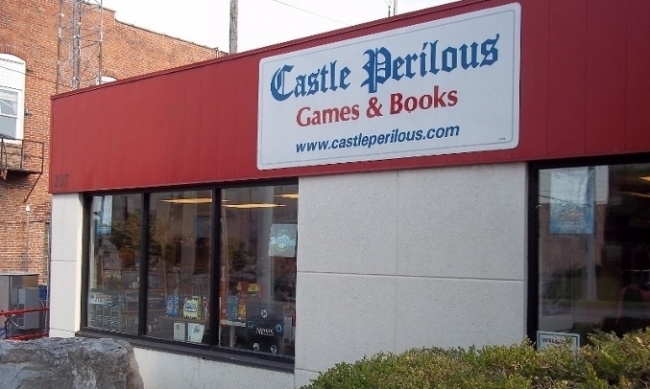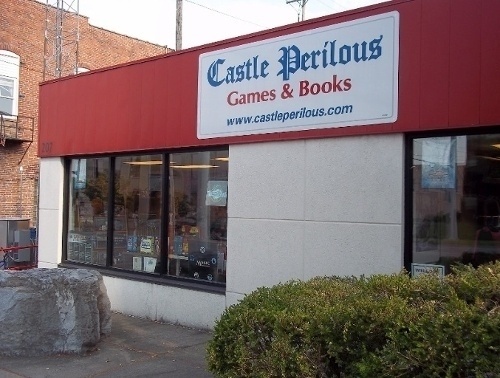Rolling for Initiative is a weekly column by Scott Thorne, PhD, owner of Castle Perilous Games & Books in Carbondale, Illinois and instructor in marketing at Southeast Missouri State University. This week, Scott Thorne looks back at what’s changed and what’s the most rewarding on the 29th anniversary of opening his store.
Sitting here getting ready for our 29th anniversary celebration tomorrow (We actually opened on February 14, 1990 but figure that first, Sunday is a better day to run it since more people have free time to come by, and second, people generally have other things to do on February 14 every year). So, taking a trip down the almost thirty years we have been open, here are some thoughts that struck me:
1. NOBODY knew what Magic was. I remember my Chessex sales rep (Chessex ran a distributorship at the time, concurrent with its dice operation, then merged with The Armory in the late 1990s to form Alliance Distribution) pitching this new card game to me but he could not explain to me what it was or how it played: "Well, there you have a deck of cards and there are these packs of cards that you open up and can add to your deck to modify it." "Well, how do you play if you modify the deck? Don’t you have to use the same deck to play?" Never did get a clear answer as to how the game played but decided to give it a try and ordered a deck and two boosters of what is now called Alpha. Still could not learn from anyone how to play (long before the Internet or the easy availability of demo copies of games) so they sat there for about three months until customers came back from Gen Con raving about this game called Magic: The Gathering they had played. After that, restocks only lasted a few days and a year or so later, even bars and convenience stores had a booster display of Magic on the shelf.
2. Pokemon. Until Pokemon, the hobby game industry skewed heavily high school and college age male. They had been the primary audience for Dungeons & Dragons and other RPGs, as well as Magic and the slew of other TCGs that followed in its footsteps. Pokemon changed that. Although Wizards of the Coast, which owned the rights to the game at the time, sold most of the product to the mass market, kids wanted to play and, thanks to Magic, most game stores already had game space set up. Pokemon was so hot that Walmart and Toys 'R' Us did set up in-store gaming for a while, but it fell to the game store to host the majority of events and Wizards of the Coast did a fantastic job supporting the stores with promo cards and league kits which brought in kids, and with them parents, who would never had set foot in the store otherwise. The image I remember most from that time is a promo Mew card WotC sent stores. The company announced players could get one for free on a certain Saturday. When we opened that morning, the line of parents and kids waiting to get the card stretched about a block. With the possible exception of Free Comic Book Day, I do not think we have ever had that large a crowd waiting to get into the store.
3. Parents and Kids. It was fun in the early years, selling RPGs and Magic (and other TCGs) to customers and waiting to see the new stuff arriving each week, but, these days, what I really enjoy is seeing those kids that played and bought Pokemon or Magic or D&D here now coming in with their own kids, wanting to introduce them to Pokemon or Magic or D&D and wanting to do it here. It makes us feel like we accomplished something, introducing someone to a game they enjoyed enough that years later, they want their own kids to have the same experience. I hope, if you run a game (or comic) store, you have the same experience.
Thanks for reading. Looking forward to the next 29 years.
The opinions expressed in this column are solely those of the writer, and do not necessarily reflect the views of the editorial staff of ICv2.com.

Column by Scott Thorne
Posted by Scott Thorne on February 18, 2019 @ 7:29 am CT



